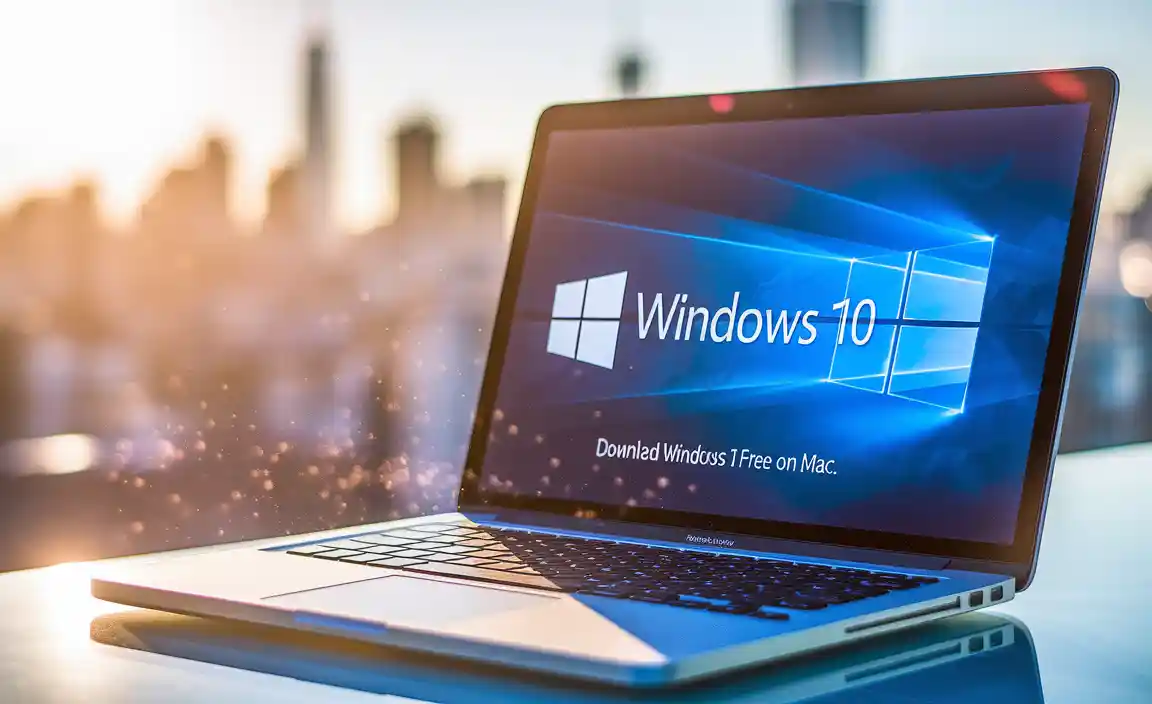Download Windows 10 Free on Mac: Easy
For Mac users who find themselves needing the functionality of Windows 10, either for specific software, gaming, or work-related tasks, the prospect of running it on their Apple hardware might seem daunting. However, the reality is that downloading Windows 10 for free on Mac is not only possible but also remarkably straightforward, thanks to built-in tools and third-party solutions. This guide will walk you through the simplest and most effective methods to achieve this, ensuring you can seamlessly integrate the Windows environment into your macOS workflow.

The primary method that Apple provides for running Windows on a Mac is through their Boot Camp Assistant utility. This feature is pre-installed on most Intel-based Macs and allows you to partition your hard drive, creating a separate space where you can install Windows. Once installed, you can choose to boot your Mac directly into either macOS or Windows, giving you access to both operating systems. This is often referred to as a “dual-boot” setup. The advantage here is that Windows runs natively, meaning you get the full performance of your Mac’s hardware allocated to the Windows operating system, which is ideal for demanding applications or gaming.
Before you begin the process of downloading Windows 10 for free on Mac using Boot Camp, there are a few prerequisites you need to address. First, ensure your Mac is compatible. Boot Camp generally supports Intel-based Macs; Macs with Apple Silicon (M1, M2 chips, etc.) have a different approach, usually involving virtualization software. Next, you’ll need a Windows 10 disk image, commonly known as an ISO file. You can legally download an ISO of Windows 10 from Microsoft’s official website for free. While this download is free, you will eventually need a valid Windows product key to activate it and unlock its full features.
Downloading Windows 10 for Free on Mac: The Boot Camp Assistant Method
Boot Camp Assistant simplifies the partitioning and installation process significantly. When you launch it (found in your Applications > Utilities folder), it will guide you through the steps. It will ask you to specify how much space you want to allocate to your Windows partition. It’s recommended to dedicate at least 64GB, but 128GB or more is preferable if you plan to install many applications or games. Boot Camp Assistant will then download the necessary Windows support software from Apple, which includes drivers for your Mac’s hardware, ensuring that components like Wi-Fi, Bluetooth, graphics, and sound work correctly in Windows.
Once the partitioning is complete, your Mac will restart, and the Windows installer will launch from the ISO file you provided. You’ll follow the standard Windows installation prompts. During the installation, you’ll need to select the BOOTCAMP partition as the installation location. Remember not to format any Mac partitions; only select the designated BOOTCAMP partition. After Windows is installed, your Mac will boot into the Windows environment. The Boot Camp installer program should automatically run, installing all the necessary drivers. If it doesn’t, you can usually find it on a USB drive or within the downloaded support software folder. This driver installation is crucial for a smooth Windows experience on your Mac.
Exploring Alternatives: Virtualization for Windows 10 on Mac
While Boot Camp offers native performance, it requires restarting your Mac to switch between operating systems. For users who need to run Windows applications alongside macOS without rebooting, virtualization software is the ideal solution. Popular options include Parallels Desktop, VMware Fusion, and VirtualBox. These applications create a virtual machine (VM) – essentially a simulated computer within your Mac – where you can install and run Windows. This means you can have both macOS and Windows running simultaneously, easily switching between them with a click.
To download Windows 10 for free on Mac via virtualization, you’ll still need the Windows 10 ISO file from Microsoft. The virtualization software will then guide you through the process of creating a new virtual machine and installing Windows onto it using the ISO. The advantage of virtualization is its flexibility. You can allocate specific amounts of RAM and processing power to your Windows VM, adjust settings on the fly, and even share files and clipboards seamlessly between macOS and Windows. However, it’s important to note that virtualization does come with a performance overhead, as your Mac’s resources are being shared between two operating systems. This might not be ideal for highly demanding gaming or intensive graphic design work where every ounce of performance matters.
Is It Truly Free? Understanding Licensing
It’s crucial to understand what “free” means in the context of downloading Windows 10 for free on Mac. As mentioned, Microsoft allows you to download the Windows 10 ISO image without charge, and even install it without a product key. However, this installation will be unactivated. An unactivated version of Windows has limitations, such as a watermark on your desktop, inability to personalize certain settings, and periodic reminders to activate. To use Windows 10 fully and legally, you will need to purchase a product key and activate your installation.
You can purchase a Windows 10 Home or Pro license directly from Microsoft or authorized retailers. For many users, the cost of a basic Windows license is a worthwhile investment for the flexibility it provides on their Mac. For enterprise or educational institutions, there might be volume licensing options or specific programs that could offer cost savings.
In conclusion, downloading Windows 10 for free on Mac is an accessible path for many users, whether for occasional use or regular integration. Boot Camp Assistant offers a native, high-performance solution for Intel Macs, while virtualization software provides seamless multitasking. While the download of the operating system itself is free, remember to consider the eventual need for a legitimate Windows product key to unlock the full experience and comply with licensing agreements. With the right approach and understanding of the available tools, you can successfully bring the power of Windows 10 to your Apple ecosystem.
